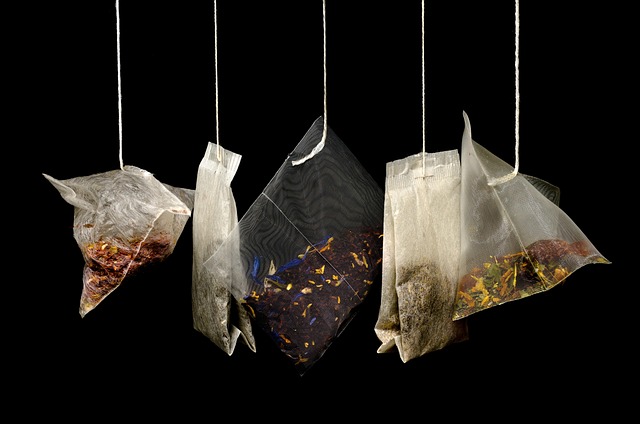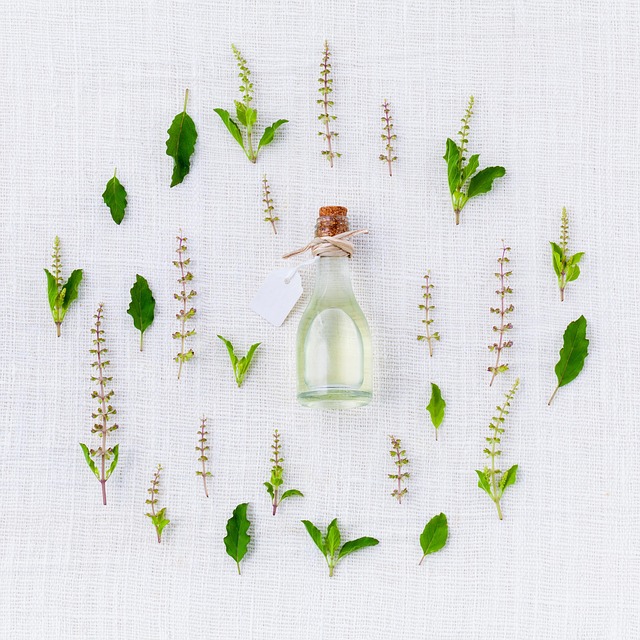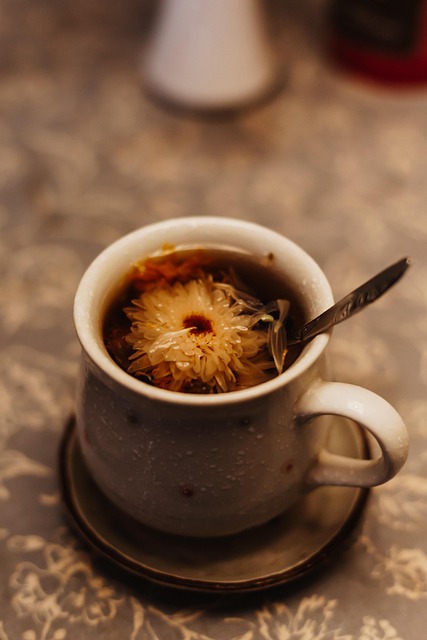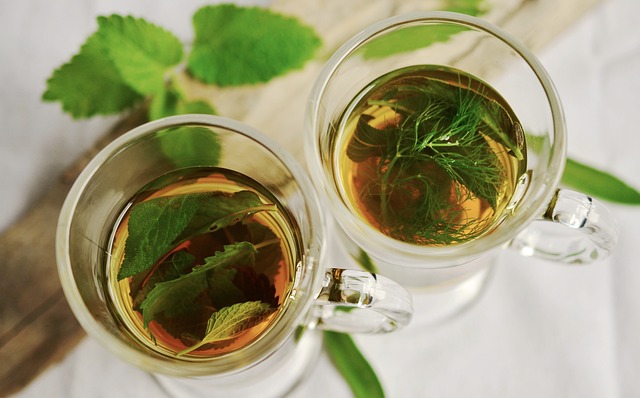The growing popularity of herbal perfumes reflects a trend towards natural scents that prioritize both sensory pleasure and environmental responsibility. Consumers are increasingly demanding sustainable skincare solutions derived from botanicals like herbs, flowers, and citrus fruits. This shift has led to innovations in packaging design, with brands adopting eco-friendly materials such as biodegradable papers, plant-based plastics, and glass containers. Refillable and reusable bottles minimize waste and promote sustainability. In terms of visual design, organic shapes, textures, and biomimicry inspired by plants enhance the natural allure of herbal perfumes. Regulatory compliance regarding ingredient safety and transparent labeling remains crucial while catering to the growing demand for aesthetically pleasing and sustainable packaging solutions.
“Unveiling the allure of herbal perfumes and their growing popularity in a market saturated with synthetic fragrances. This article explores the art of packaging these natural scents, delving into its impact on user experience and environmental sustainability. From understanding consumer preferences for organic options to creative design strategies, we navigate the world of herbal perfume packaging. Discover innovative solutions that blend aesthetics with eco-consciousness, catering to both the senses and the planet.”
- Understanding the Appeal of Herbal Perfumes and Natural Scents
- The Role of Packaging in Enhancing the User Experience
- Sustainable and Eco-Friendly Packaging Solutions for Herbal Perfumes
- Creative Design Ideas for Standout Herbal Perfume Packaging
- Regulatory Considerations and Consumer Preferences in Herbal Perfume Packaging
Understanding the Appeal of Herbal Perfumes and Natural Scents

Herbal perfumes have gained significant popularity in recent times, and it’s easy to see why. With a growing awareness and appreciation for natural products, consumers are increasingly seeking out alternatives that offer both sensory pleasure and environmental benefits. Natural scents, derived from botanicals like herbs, flowers, and citrus fruits, not only provide a refreshing and unique olfactory experience but also appeal to those conscious of the potential environmental impact of synthetic fragrances.
This shift towards herbal perfumes and natural scents can be attributed to their ability to offer a diverse range of aromas that cater to various preferences. From invigorating mint and lemongrass notes to soothing lavender and chamomile, these perfumes provide a sensory journey through nature’s fragrant landscape. Moreover, the use of natural ingredients often translates to a product that is gentler on the skin and more sustainable, making it an attractive option for health-conscious and eco-aware consumers.
The Role of Packaging in Enhancing the User Experience

Packaging plays a pivotal role in shaping the user experience with herbal perfumes, especially when it comes to showcasing and preserving their natural scents. The right packaging design can transform a simple product into an alluring, sensory experience. For instance, using recyclable glass bottles with elegant labels not only adds sophistication but also reflects the product’s natural origins. This tactile interaction—the weight of glass, the smooth label—becomes part of the ritual, enhancing the overall enjoyment.
Moreover, packaging can extend the life of herbal perfumes by offering protection from light and air, which are detrimental to essential oils. Innovative designs with airtight seals ensure the scents remain fresh and potent. This preservation not only benefits the user but also encourages a deeper appreciation for natural scents, fostering a connection between the product and its environment.
Sustainable and Eco-Friendly Packaging Solutions for Herbal Perfumes

In today’s conscious consumer landscape, sustainable and eco-friendly packaging solutions are in high demand, especially for products like herbal perfumes that rely on natural scents. Brands are increasingly embracing environmentally friendly materials to create packaging that mirrors the purity of the herbs and essential oils within their products. Biodegradable papers, plant-based plastics derived from materials like cornstarch or sugarcane, and glass containers are some of the preferred choices. These options not only reduce environmental impact but also enhance the perceived value of herbal perfumes, appealing to consumers who prioritize sustainability.
Moreover, innovative packaging designs focus on minimizing waste and maximizing recyclability. Refillable and reusable bottles, for instance, encourage customers to top up their fragrances instead of purchasing new products, thereby reducing plastic waste. Some brands even incorporate refillable components into their packaging, ensuring that every aspect contributes to a greener solution. This trend not only benefits the planet but also helps herbal perfume companies stand out in a crowded market by showcasing their commitment to natural scents and sustainable practices.
Creative Design Ideas for Standout Herbal Perfume Packaging

When designing standout herbal perfume packaging, creative minds can explore a world of possibilities inspired by the very essence of nature itself. One innovative approach is to embrace the organic shapes and textures found in plants. Imagine a bottle shaped like a twining vine or a cap mimicking the leaf patterns of a forest floor—a unique presentation that instantly evokes the natural scents within. This biomimicry not only creates an eye-catching visual but also strengthens the connection between the product and its herbal origins.
Additionally, incorporating translucent elements can offer a captivating glimpse into the bottle’s contents. A delicate glass vessel with subtle etchings of botanical illustrations allows light to filter through, creating a mesmerizing play of shadows and enhancing the allure of the natural scents. This design strategy not only ensures brand recognition but also encourages customers to reach for these unique herbal perfumes, offering them an experience that transcends mere scent.
Regulatory Considerations and Consumer Preferences in Herbal Perfume Packaging

When it comes to packaging herbal perfumes and natural scents, regulatory considerations play a vital role in ensuring product safety and environmental sustainability. Ingredients used in these fragrances must adhere to strict standards set by governing bodies to guarantee they are non-toxic and ethically sourced. This includes transparency in labeling, disclosing any synthetic components or potential allergens, and complying with regulations regarding the use of specific natural extracts. For instance, many regions have guidelines on maximum concentrations of certain herbs or essential oils to prevent irritation or adverse reactions.
Consumer preferences for herbal perfumes and natural scents are driving innovation in packaging design and materials. Eco-conscious consumers often seek sustainable options, such as biodegradable or recyclable containers made from plant-based materials or recycled content. They also appreciate minimalist and aesthetically pleasing designs that reflect the essence of natural scents. Moreover, some buyers prefer reusable or refillable packaging to reduce waste. Brands are responding by offering a range of packaging solutions, catering to diverse consumer preferences while meeting regulatory standards for product safety and environmental responsibility.
Herbal perfumes, with their distinct natural scents, have gained popularity due to their allure and therapeutic properties. Packaging plays a vital role in enhancing the user experience, from the moment the product is unboxed to its ongoing interaction with consumers. By embracing sustainable and eco-friendly packaging solutions, brands can appeal to environmentally conscious customers while ensuring regulatory compliance. Creative design ideas that capture the essence of herbal fragrances can set products apart on retail shelves, fostering brand loyalty. Ultimately, thoughtful packaging strategies for herbal perfumes not only protect the product but also elevate its perceived value, making it a standout choice in the market.







Leave a Reply
You must be logged in to post a comment.